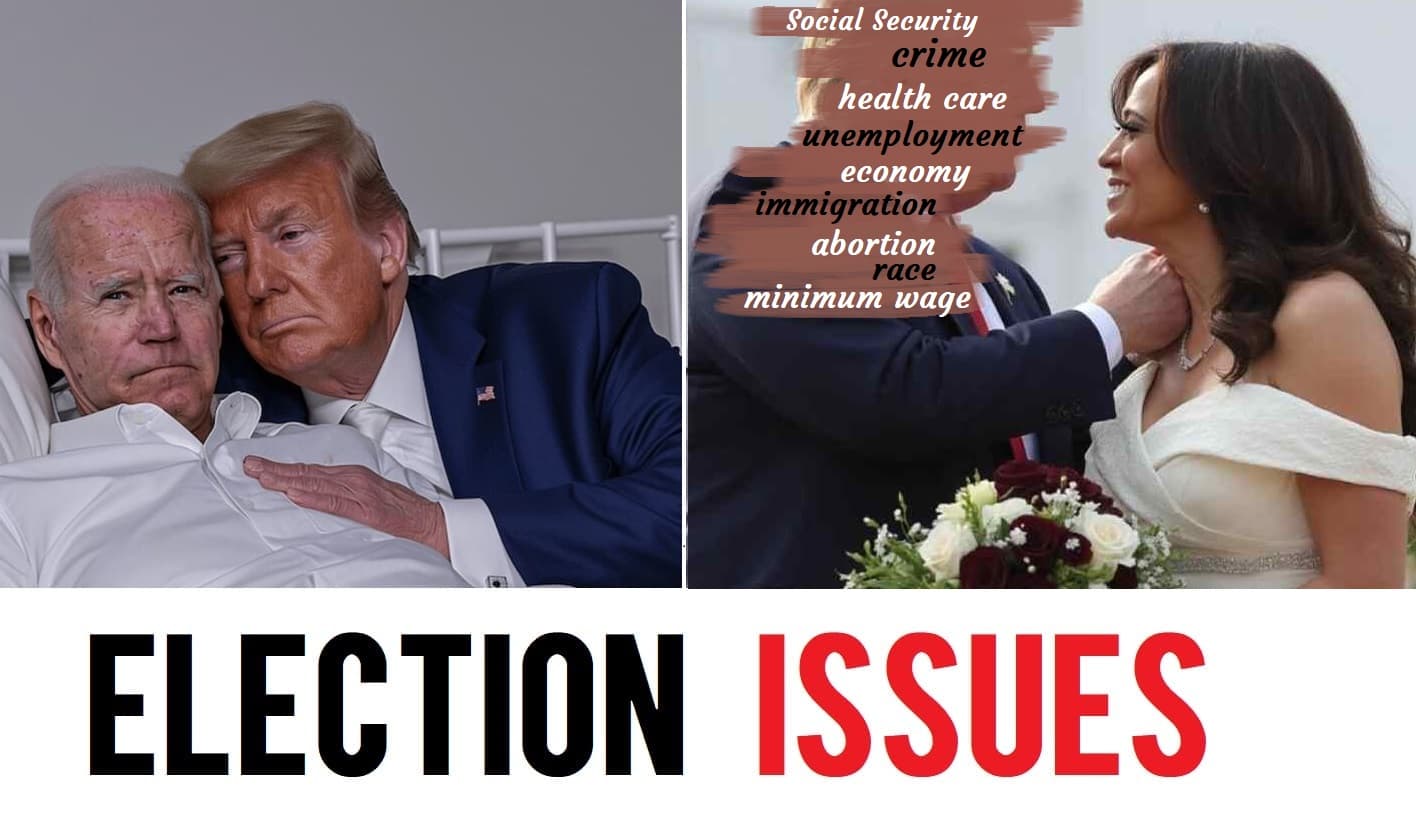
Political campaigns are as diverse as the candidates themselves. Comparing Donald Trump’s campaigns with those of other prominent figures, like Hillary Clinton, Joe Biden, and Kamala Harris, provides valuable insights into what makes a campaign successful. This article delves into how Trump’s strategies differ from traditional politics and offers a detailed comparison of his campaigns with those of other key politicians.
Trump vs. Hillary Clinton: A Campaign Comparison
Donald Trump and Hillary Clinton ran two vastly different campaigns in 2016. Here’s a closer look at their contrasting approaches:
Trump’s Campaign Strategies
- Outsider Appeal: Trump positioned himself as an outsider, challenging the political establishment. His campaign focused on being anti-establishment and promised a break from traditional politics.
- Media Mastery: Trump leveraged media coverage to his advantage, using controversial statements to dominate headlines. His approach kept him constantly in the public eye.
- Emotional Connection: His messaging was emotionally charged, appealing to voters’ frustrations and hopes with direct, simple language.
Clinton’s Campaign Strategies
- Experienced Politician: Clinton highlighted her extensive experience and policy expertise, positioning herself as a seasoned leader ready to continue Obama’s legacy.
- Policy Focus: Her campaign emphasized detailed policy proposals and a commitment to incremental change.
- Traditional Campaigning: Clinton’s campaign used traditional political strategies, focusing on building a broad coalition of support through established networks.
Trump’s outsider appeal and media dominance contrasted sharply with Clinton’s focus on experience and detailed policy proposals.
How Trump’s Campaign Differed from Traditional Politics
Trump’s campaign strategies marked a departure from traditional political tactics:
Traditional Campaign Tactics
- Focus on Experience: Traditional campaigns often emphasize a candidate’s experience and policy knowledge.
- Policy-Centric Messaging: Detailed policy plans and platforms are central to traditional campaigning.
- Moderate Media Approach: Conventional campaigns typically avoid controversy and focus on positive messaging.
Trump’s Approach
- Anti-Establishment Messaging: Trump embraced a populist, anti-establishment message, appealing to voters frustrated with the status quo.
- Controversial Tactics: His use of provocative statements and social media helped him dominate the media landscape.
- Simplified Messaging: Trump’s campaign messages were direct and simple, focusing on broad themes rather than detailed policy plans.
Trump’s unconventional approach disrupted traditional campaign strategies and reshaped modern political campaigning.
A Comparative Analysis of Trump and Biden’s Campaigns
Comparing Trump’s 2016 campaign with Joe Biden’s 2020 campaign reveals different strategies and priorities:
Trump’s 2016 Campaign
- Emotional Appeals: Focused on stirring emotions and addressing grievances with simple, impactful language.
- Media Manipulation: Skillful use of media to keep his campaign in the spotlight.
- Populist Themes: Emphasized themes of nationalism and economic discontent.
Biden’s 2020 Campaign
- Restoring Stability: Biden’s campaign centered on restoring normalcy and stability following Trump’s presidency.
- Policy Details: Biden’s campaign highlighted detailed policy proposals and a commitment to addressing issues like COVID-19 and healthcare.
- Unified Message: Focused on unifying the country and building a broad coalition of support across different demographics.
Biden’s campaign aimed to provide a contrast to Trump’s presidency by focusing on stability and detailed policy solutions.
Political Marketing: Trump vs. Clinton Case Study
Analyzing the marketing strategies of Trump and Clinton reveals different approaches to reaching voters:
Trump’s Marketing
- Branding and Identity: Trump’s campaign effectively branded him as a unique outsider with a clear identity.
- Digital Savvy: Utilized social media platforms for direct engagement and messaging.
- Controversy as Strategy: Embraced controversy to generate media coverage and public discussion.
Clinton’s Marketing
- Traditional Advertising: Relied on conventional advertising methods, including TV commercials and print ads.
- Policy-Centric Messaging: Focused on detailed policy proposals and endorsements from established political figures.
- Grassroots Efforts: Emphasized grassroots organizing and traditional campaign events to build support.
Trump’s marketing strategies focused on branding and media manipulation, while Clinton’s efforts centered on traditional advertising and policy details.
The Differences Between Trump and Harris’ Campaigns
Comparing Trump’s campaigns with those of Kamala Harris highlights distinct approaches:
Trump’s Campaigns
- Populist Appeal: Focused on populist themes and direct messaging.
- Media Focus: Leveraged media coverage, often through controversy and direct communication.
- Simplified Messaging: Emphasized broad, easy-to-understand messages.
Harris’ Campaign
- Progressive Agenda: Harris’s campaign highlighted progressive policies and a commitment to social justice.
- Coalition Building: Focused on building a diverse coalition of supporters.
- Policy Focus: Emphasized detailed policy proposals and her experience as a prosecutor and senator.
Harris’s campaign focused on progressive issues and coalition-building, contrasting with Trump’s populist and media-driven strategies.
How Trump’s Strategies Stood Out Against Clinton’s
Trump’s campaign strategies were notably different from Clinton’s:
- Outsider Image: Trump’s outsider image and anti-establishment rhetoric were key differentiators.
- Media Tactics: His ability to generate constant media coverage through controversy was a unique aspect of his strategy.
- Emotional Resonance: Trump’s use of emotional appeals and simple messaging contrasted with Clinton’s policy-focused approach.
Trump’s strategies effectively differentiated him from Clinton and resonated with voters in a way that traditional political tactics did not.
Why Trump’s Campaign Messaging Was More Effective
Several factors contributed to the effectiveness of Trump’s campaign messaging:
- Simplicity: His messages were clear and easy to understand, making them memorable and impactful.
- Emotional Connection: Trump’s messaging resonated emotionally with voters, tapping into their frustrations and hopes.
- Media Domination: By generating constant media coverage, Trump kept his campaign in the public eye and maintained relevance.
Trump’s ability to connect emotionally, simplify complex issues, and dominate media coverage contributed to the effectiveness of his campaign messaging.
A Comparative Study of Trump and Obama’s Campaigns
Comparing Trump’s campaigns with Barack Obama’s provides insights into different political strategies:
Trump’s Campaigns
- Populism and Media Savvy: Emphasized populist themes and used media manipulation effectively.
- Simplified Messaging: Focused on broad, impactful messages with emotional resonance.
- Controversy and Directness: Embraced controversy and direct communication.
Obama’s Campaigns
- Hope and Change: Focused on themes of hope and change, with a positive, unifying message.
- Detailed Policy Proposals: Emphasized detailed policy proposals and an inclusive vision.
- Organizational Strength: Utilized a strong grassroots organization and digital strategy.
Obama’s campaigns were characterized by positive messaging, detailed policies, and strong organizational efforts, contrasting with Trump’s more controversial and media-focused approach.
Trump vs. Traditional Politicians: A Strategy Breakdown
Trump’s strategies marked a departure from traditional political tactics:
- Unconventional Methods: Used unconventional methods, including media manipulation and direct, controversial statements.
- Populist Appeal: Focused on populist themes and anti-establishment rhetoric.
- Simplified Communication: Emphasized simplicity and emotional resonance in messaging.
Trump’s strategies differed significantly from those of traditional politicians, reshaping modern campaign tactics.
Trump’s Tactics vs. The Establishment: A Comparative Look
Trump’s tactics contrasted sharply with those of the political establishment:
- Challenging the Status Quo: Trump’s campaign was a direct challenge to the political establishment, using outsider rhetoric and controversial tactics.
- Media Exploitation: Effectively exploited media coverage to maintain a high profile.
- Emotional and Simplified Messaging: Focused on emotional appeals and simplified messaging to connect with voters.
Trump’s approach was a departure from traditional politics, leveraging unconventional tactics and media strategies to achieve campaign success.
By examining Trump’s campaign strategies and comparing them with those of other prominent politicians, we gain valuable insights into modern political campaigning and the evolving nature of political marketing.












